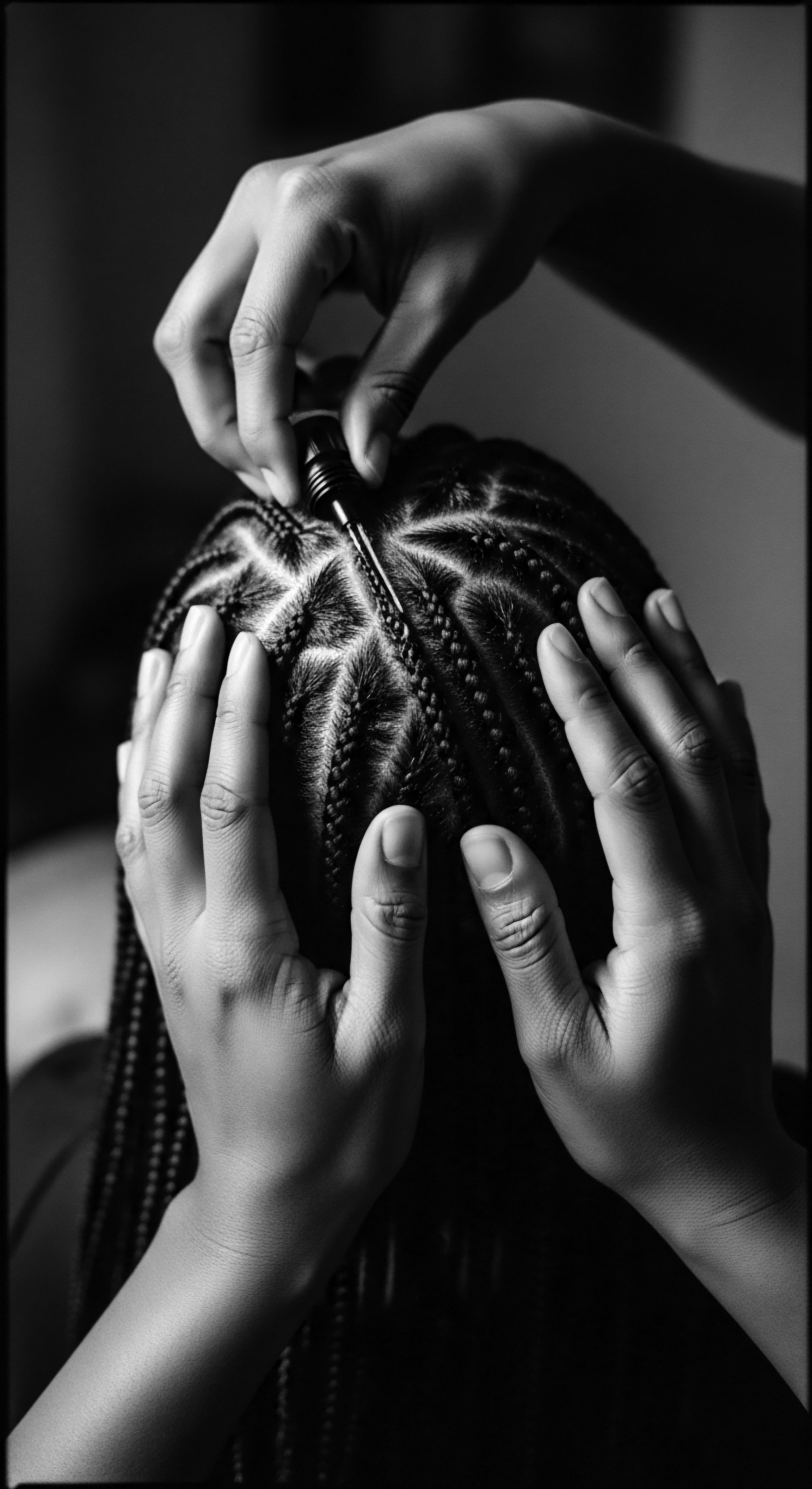
Fundamentals
The intricate world of textured hair, with its coils and curves, holds within its very structure a narrative of resilience and profound beauty. To comprehend the delicate balance of its health, we must first turn our attention to the fundamental concept of hair abrasion. At its simplest, hair abrasion signifies the physical wear or damage that befalls the hair fiber, particularly its outermost protective layer known as the cuticle.
This external layer, resembling overlapping scales on a fish or shingles on a roof, forms a crucial shield. When these scales are disturbed, lifted, or chipped away by external forces, the hair experiences abrasion.
Consider the daily rhythms of life ❉ a vigorous towel dry, the persistent rubbing against clothing, even the gentle caress of fingers through strands. Each interaction introduces a degree of friction, a minute dance of contact that, over time, can lead to the thinning of the hair’s defenses. For textured hair, this elemental biological truth carries a particular resonance.
Its unique helical structure, with its twists and turns, naturally creates more points of contact between individual hair strands. This increased contact elevates the propensity for friction, making textured hair inherently more vulnerable to the effects of abrasion compared to its straighter counterparts.
Hair abrasion reflects physical wear upon the hair fiber, especially its protective outer cuticle.
Understanding this basic explanation of hair abrasion is the first step toward appreciating the legacy of care woven into the ancestral practices of Black and mixed-race communities. For generations, wisdom passed down through touch and oral tradition has instinctively sought to guard these precious strands against such wear, long before scientific terminologies existed. The initial elucidation of hair abrasion grounds us in the biological reality, inviting us to explore its deeper significance within a living heritage.
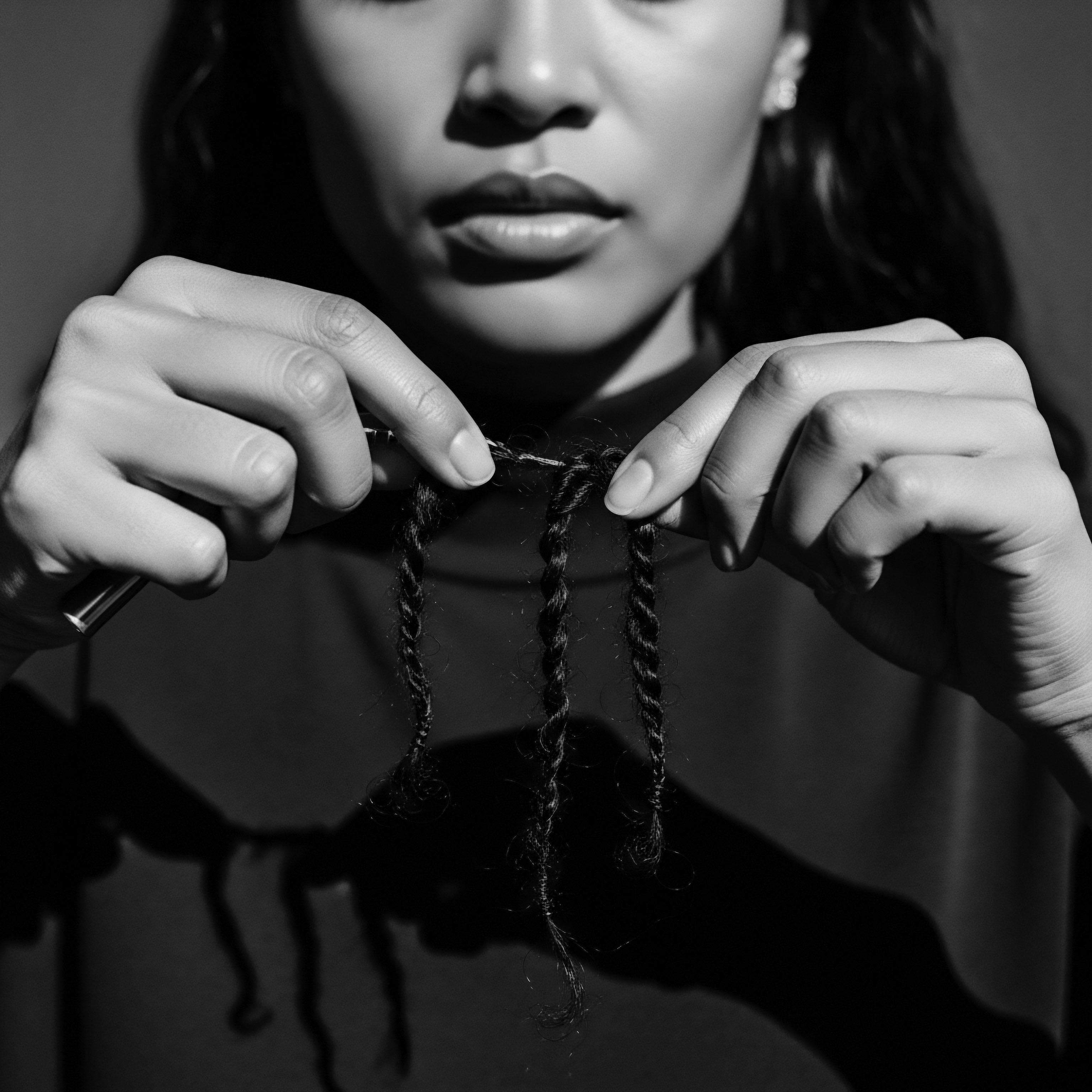
Intermediate
Moving beyond the elemental description, an intermediate understanding of hair abrasion beckons us to examine its mechanics with greater precision, always mindful of its particular expression within the cherished heritage of textured hair. Hair abrasion extends beyond mere surface scratching; it represents a progressive degradation of the hair shaft’s integrity. Each hair strand, a marvel of bio-engineering, consists of a keratinous core, the cortex, encased by the cuticle. The cuticle’s scales lie flat, overlapping downwards, forming a smooth, resilient surface that reflects light and seals the inner cortex, preventing moisture loss and resisting external aggressors.
When hair encounters friction – whether from aggressive detangling, constant manipulation, the rub of fabrics like cotton pillowcases, or even the harshness of certain styling tools – these delicate cuticular scales begin to lift, fray, and eventually chip away. This process exposes the more vulnerable inner cortex, leading to a cascade of issues. Once the cuticle is compromised, the hair’s ability to retain moisture diminishes significantly, resulting in dryness, a loss of elasticity, and a heightened susceptibility to tangling.
The hair becomes rough to the touch, loses its natural sheen, and its tensile strength diminishes, making it prone to breakage. This cumulative damage is the silent story of abrasion.
Intermediate analysis reveals hair abrasion as progressive degradation of the hair shaft’s integrity, where cuticular scales lift and chip away, exposing the vulnerable inner cortex.
For individuals with textured hair, the spiraling, coiling, or kinky formations inherently present more surface area and more natural points where strands can intertwine. This structural reality amplifies the potential for mechanical stress during routine care, making gentle handling not merely a preference, but a fundamental necessity. Ancestral wisdom, passed through countless generations, intuitively grasped this truth.
Practices centered on tender manipulation, the application of natural lubricants, and protective styling were, at their heart, profound acts of preserving cuticular integrity and minimizing abrasion. These traditions, born of deep observation and understanding of hair’s needs, stand as testaments to an enduring knowledge system that understood the very principles of hair health long before the advent of scientific laboratories.
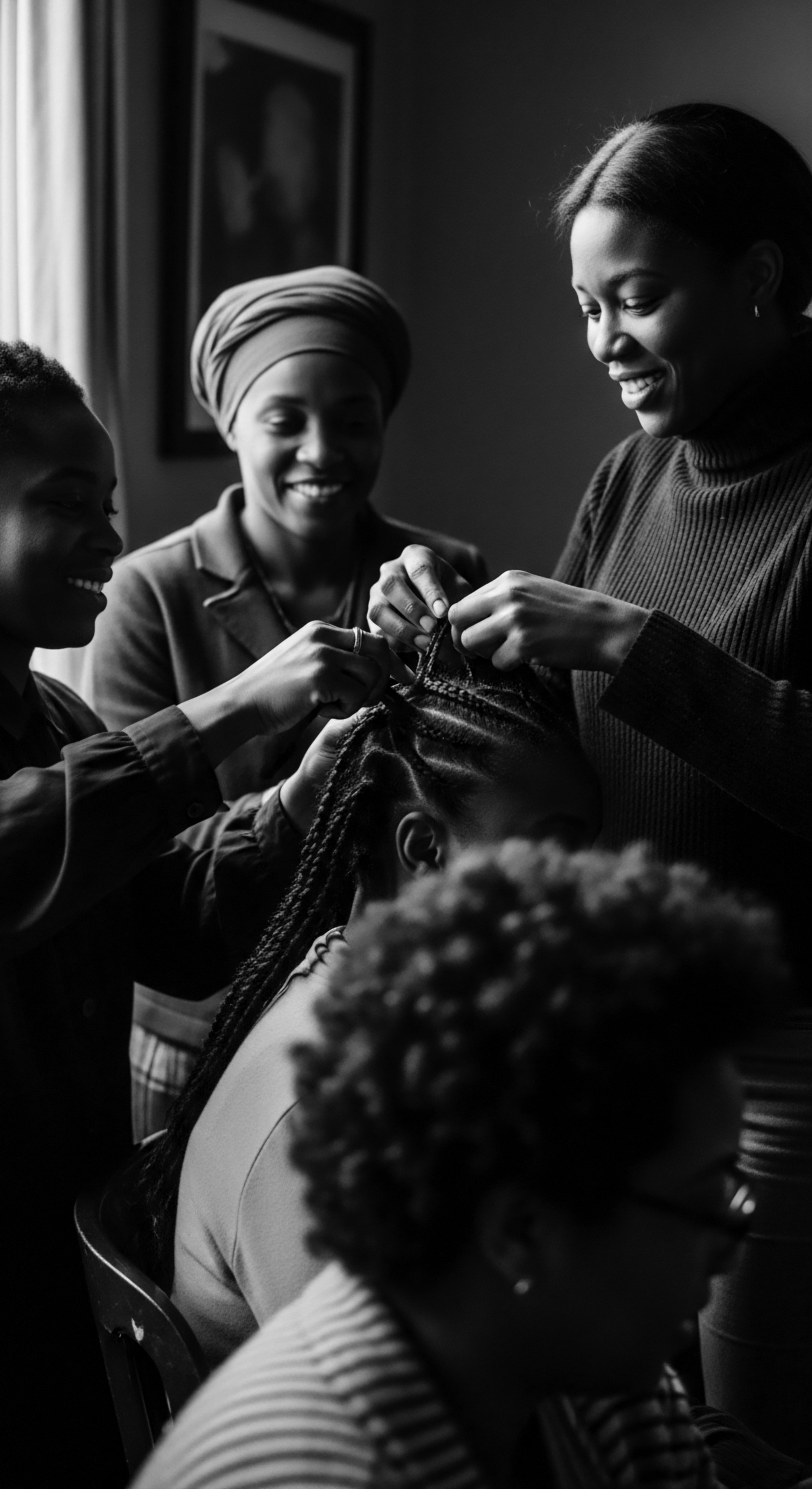
The Agents of Wear ❉ Understanding Common Abrasions
The path to understanding hair abrasion further requires us to identify its most common agents, particularly within the textured hair experience. These are not always dramatic events but often a series of small, repetitive actions that accumulate over time, much like the slow erosion of a riverbed.
- Vigorous Detangling ❉ The act of separating intertwined strands, especially when dry or without sufficient slip, can forcefully lift and tear at the cuticle.
- Friction with Fabrics ❉ Contact with rough materials like cotton towels, bed linens, or certain clothing can create constant friction, leading to significant wear, particularly at the ends or points where hair rubs against shoulders.
- Improper Styling Tools ❉ Combs and brushes with sharp seams or widely spaced teeth, used without care, can snag and abrade the hair fiber.
- Repetitive Manipulation ❉ Constant touching, twisting, or playing with hair, while seemingly innocuous, contributes to the cumulative wear and tear on the cuticle.
- Environmental Exposure ❉ Wind, direct sunlight, and even harsh water can dry out the hair, making its cuticle more brittle and vulnerable to physical abrasion.
The ancestral responses to these common abrasive forces often involved practices that fostered moisture and minimized manipulation. For instance, the application of plant-derived oils or butters created a natural slip, easing detangling and reducing friction. Protective styles, from intricate braids to head wraps, shielded hair from environmental exposure and daily rub, thereby honoring its delicate structure. These time-honored approaches reveal a profound respect for hair’s inherent vulnerability and a practical wisdom in safeguarding its wellbeing.
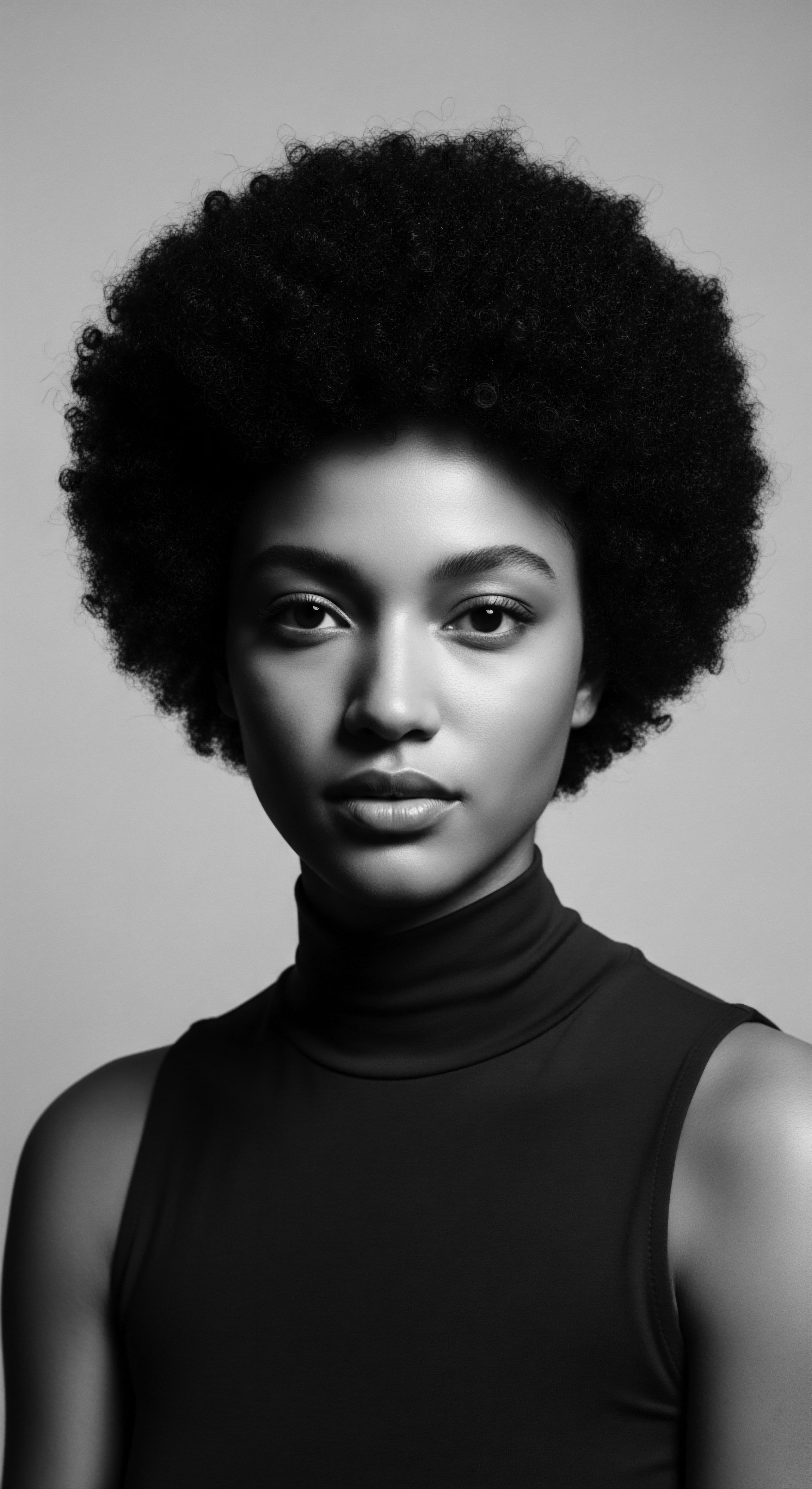
Academic
The academic understanding of hair abrasion elevates our inquiry into a rigorous examination of biophysical mechanics, historical socio-cultural forces, and their interconnected influence on the hair fiber, particularly for textured hair. Hair abrasion, within this scholarly lens, is a complex degradation process characterized by the removal or damage of the hair shaft’s outermost layer, the cuticle, due to mechanical forces. This external layer, composed of multiple layers of flattened, overlapping keratinocytes, or cuticular cells, typically lies smoothly oriented from root to tip. The integrity of this cuticular imbrication is paramount for the hair’s tensile strength, elasticity, hydrophobic properties, and aesthetic appeal.
When subjected to abrasive stimuli, the friction generates shear forces and compressive stresses that disrupt the cell-cell adhesion within the cuticle, causing scales to lift, crack, chip, or entirely detach. This progressive damage ultimately exposes the hair’s internal cortex, a region rich in structural proteins (keratin macrofibrils) that, once unprotected, becomes highly susceptible to moisture loss, oxidative stress, and further structural disintegration, culminating in diminished mechanical properties and breakage.
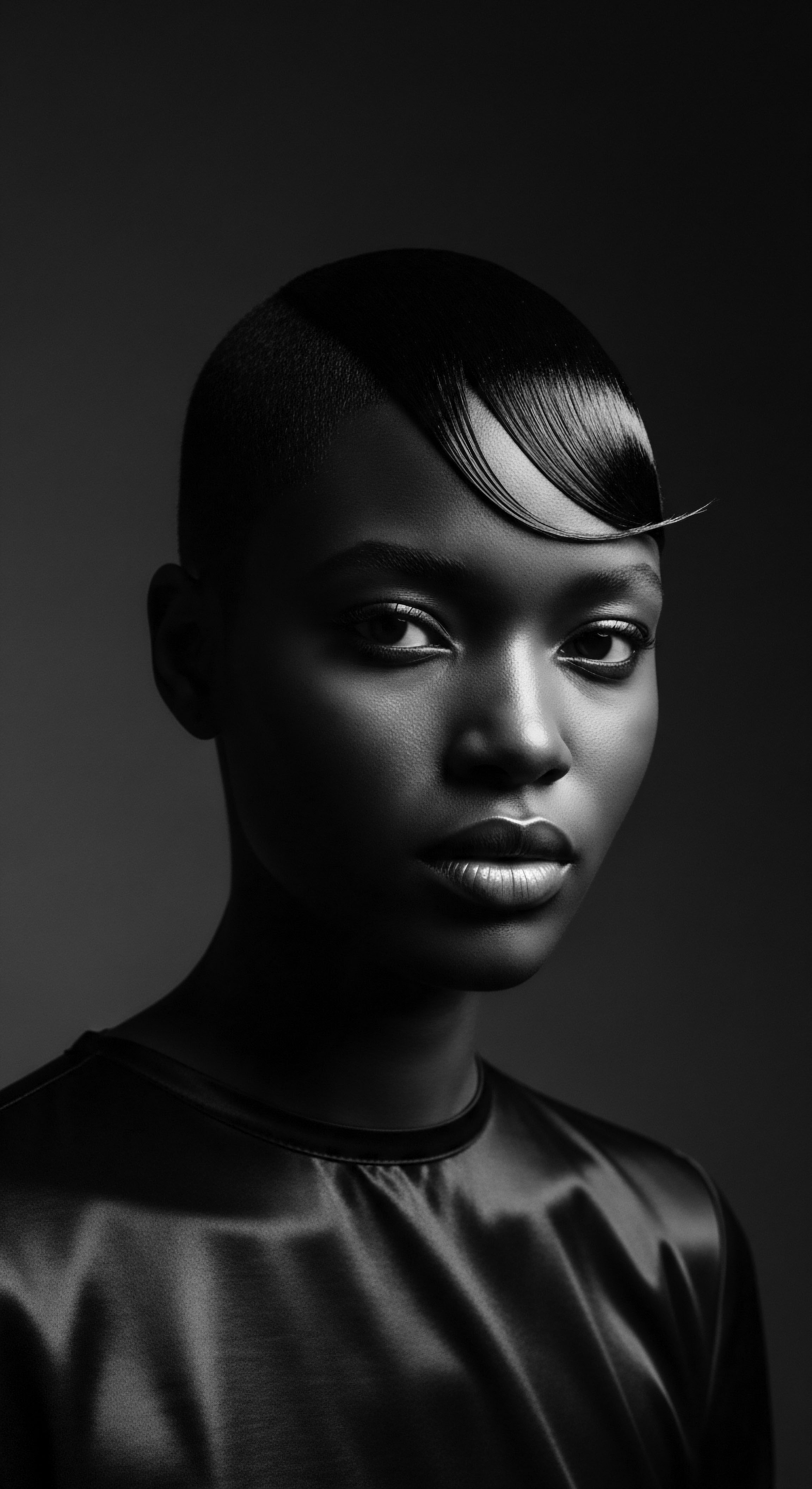
The Legacy of Friction ❉ Societal Pressures and Hair Abrasion in Textured Hair Heritage
The history of textured hair, especially within Black and mixed-race communities, offers a compelling, albeit somber, case study in the societal exacerbation of hair abrasion. The early 20th century, particularly through the mid-century, witnessed the pervasive influence of Eurocentric beauty standards that valorized straight hair. This pervasive cultural narrative created immense pressure within diasporic communities to conform, leading to the widespread adoption of straightening methods. These methods, primarily the hot comb and early chemical relaxers, represented profound mechanical and chemical assaults on the hair fiber, accelerating and intensifying hair abrasion to a degree scarcely seen in other hair types or contexts.
The hot comb, a heated metal comb applied directly to hair often coated in petroleum jelly, straightened curls through a process of temporary denaturation of keratin proteins. The extreme heat, coupled with the pulling and pressing action, subjected the hair shaft to intense frictional and thermal stress. This process literally “burned” the cuticle, causing it to crack, blister, and lift, leaving the hair rough, porous, and highly vulnerable to subsequent mechanical abrasion from styling or daily wear. Similarly, early chemical relaxers, often lye-based (sodium hydroxide), irreversibly broke and reformed the disulfide bonds within the hair’s cortex to achieve permanent straightening.
While achieving desired straightness, these harsh formulations stripped the cuticle of its protective lipids and often caused extensive damage to the cuticular cells themselves, leaving them swollen, lifted, and prone to breaking off. This chemically induced cuticular damage created a structurally compromised fiber, inherently predisposed to severe abrasion from even gentle manipulation. The cycle was vicious ❉ straightened hair, weakened by chemical and thermal processes, became more fragile and susceptible to abrasion, prompting further damaging treatments in an attempt to maintain a smooth appearance (Davis-Sivasothy, 2011, p. 120).
The historical pressure for straight hair in textured hair communities led to pervasive hot comb and chemical relaxer use, significantly increasing hair abrasion through cuticle damage.
The consequences of this historical context were profound and long-lasting. Chronic hair abrasion, driven by these practices, became a common experience, manifesting as thinning hair, receding hairlines, and widespread breakage. This was not merely a cosmetic concern; it was a deeply personal one, reflecting societal pressures that dictated self-worth and beauty, impacting mental wellbeing and self-perception across generations.
The legacy of these abrasive practices continues to inform contemporary hair care, with many now seeking to reverse this historical trajectory by embracing natural textures and gentler methods. The collective memory of hair damaged by the quest for conformity underpins a powerful movement toward protective styles and product formulations that honor the inherent structure and resilience of textured hair, seeking to restore the vitality often compromised by historical forces.

Biophysical Manifestations of Hair Abrasion ❉ From Microscopic to Macroscopic
From a biophysical standpoint, the specific structural attributes of textured hair render it uniquely susceptible to abrasion. The elliptical cross-section and helical twisting along the hair shaft create numerous bends and twists. At each bend, the cuticle is naturally elevated or stressed, providing more points of contact and friction during manipulation or environmental exposure.
This inherent structural characteristic means that even routine actions, which might cause minimal abrasion on straight hair, can result in significant damage to textured strands over time. The cumulative effect of these micro-abrasions contributes to a phenomenon often described as fiber fatigue, where the hair progressively weakens under repeated stress cycles, leading to visible breakage long after the initial abrasive events have occurred.
Moreover, studies utilizing advanced microscopy techniques, such as scanning electron microscopy (SEM), vividly illustrate the effects of abrasion. Images reveal jagged, uplifted cuticular scales, sometimes exposing large portions of the underlying cortical cells. Energy-dispersive X-ray spectroscopy (EDS) analysis can even detect changes in elemental composition, indicative of material loss from the hair surface due to abrasion. These scientific observations provide tangible evidence for the ‘wear and tear’ hypothesis, confirming that hair abrasion is a quantifiable physical phenomenon with measurable structural consequences.
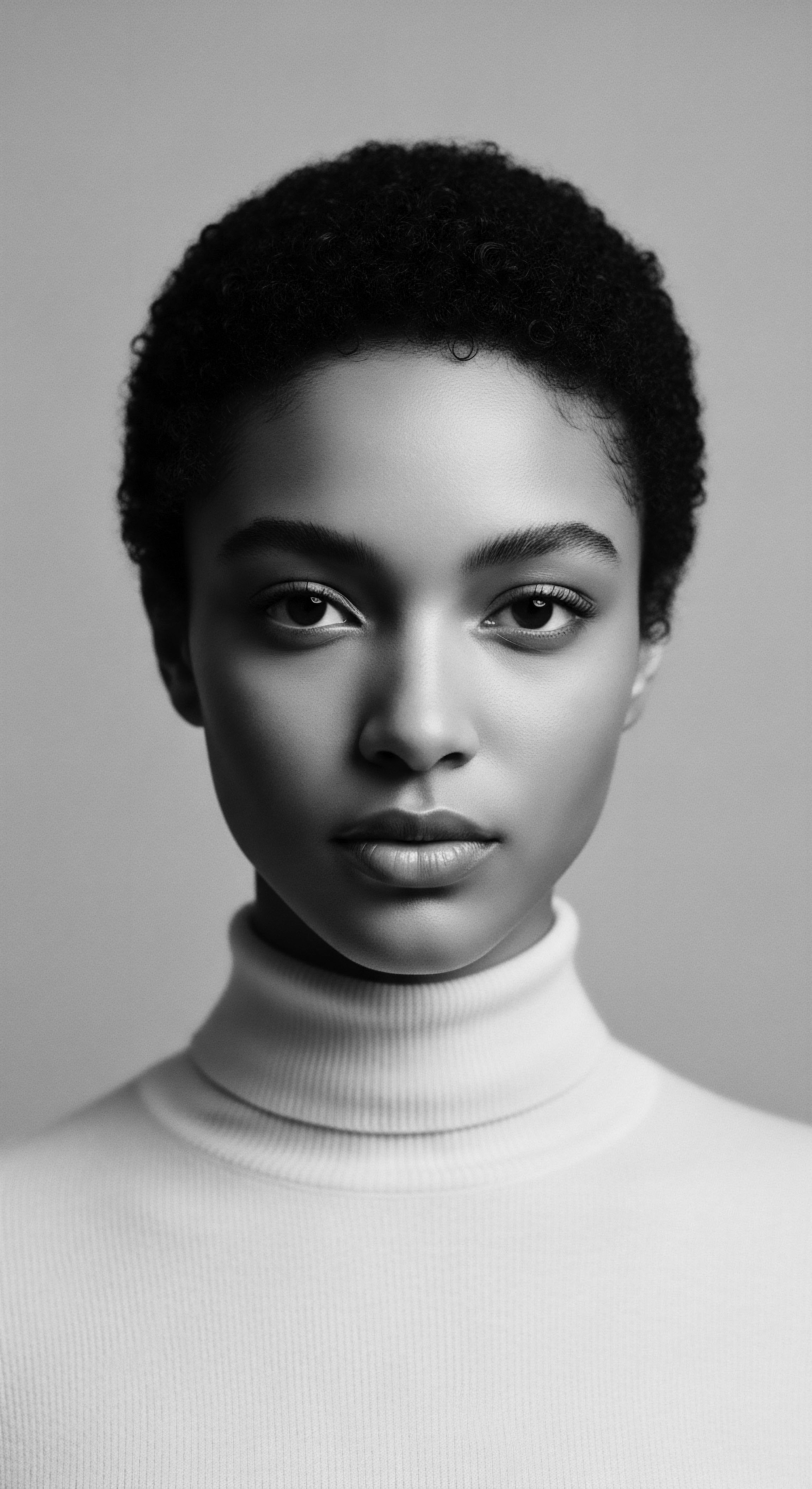
Ancestral Wisdom as Counter-Narrative ❉ Mitigating Abrasion Through Heritage Practices
In stark contrast to the historical practices that often induced abrasion, many ancestral hair care traditions, often predating formalized science, possessed an intuitive wisdom for preserving hair integrity. These practices, rooted in deep observation of natural materials and human connection, served as an ancient form of damage control, reducing the very abrasion that modern methods inadvertently escalated.
Consider the venerated tradition of collective hair grooming within various African cultures. These were not solitary acts but communal rituals, often involving patient, gentle handling, and the meticulous application of natural emollients like shea butter, coconut oil, or indigenous plant mucilages (from flaxseed, okra, or aloe vera). These substances provided extraordinary slip, reducing friction during detangling and braiding. The slower, more deliberate pace of these communal sessions, coupled with the inherent reverence for hair as a spiritual and social marker, naturally minimized the rough manipulation that leads to abrasion.
Furthermore, the use of protective styles, such as intricately coiled buns, braided patterns (e.g. Bantu knots, cornrows), or head wraps, not only carried immense cultural significance but also served a practical purpose ❉ they shielded the hair from environmental exposure, friction with clothing, and daily mechanical stress, thus preserving its delicate cuticle.
This ancestral knowledge, passed down through generations, offers a powerful counter-narrative to the damage wrought by external pressures. It underscores a holistic understanding of hair health that recognized the importance of gentle care, nourishment, and protection as fundamental pillars for resilient strands, a truth that contemporary science now affirms.
| Historical Practices (Driven by Societal Pressure) Hot Combing (extreme heat + mechanical tension) |
| Impact on Hair Abrasion Severe cuticular blistering, cracking, and lifting; increased brittleness; immediate and chronic abrasion. |
| Ancestral Practices (Rooted in Preservation) Finger Detangling / Wide-Tooth Combing (with emollients) |
| Impact on Hair Abrasion Minimizes mechanical stress; preserves cuticular integrity by reducing snagging and tearing. |
| Historical Practices (Driven by Societal Pressure) Early Chemical Relaxers (harsh lye-based formulas) |
| Impact on Hair Abrasion Extensive chemical degradation of cuticle and cortex; permanent weakening of disulfide bonds; hair becomes highly porous and prone to abrasion. |
| Ancestral Practices (Rooted in Preservation) Natural Oil/Butter Application (e.g. shea, coconut, castor) |
| Impact on Hair Abrasion Creates slip, reduces friction; coats and seals cuticle; retains moisture and enhances flexibility, thus lowering abrasion. |
| Historical Practices (Driven by Societal Pressure) Aggressive Towel Drying (rough rubbing with terry cloth) |
| Impact on Hair Abrasion Friction causes cuticular scales to lift and snag, leading to immediate abrasion and frizz. |
| Ancestral Practices (Rooted in Preservation) Air Drying / T-shirt Drying / Head Wraps (gentle moisture removal) |
| Impact on Hair Abrasion Eliminates direct friction; allows cuticle to remain smooth; prevents mechanical stress and associated abrasion. |
| Historical Practices (Driven by Societal Pressure) Over-Manipulation / Excessive Styling (constant brushing, tight ponytails) |
| Impact on Hair Abrasion Repeated tensile and shear forces cause fiber fatigue and accumulate micro-abrasions, leading to breakage over time. |
| Ancestral Practices (Rooted in Preservation) Protective Styling (braids, twists, buns, wraps) |
| Impact on Hair Abrasion Reduces exposure to daily friction; minimizes manipulation; preserves hair ends and delicate areas, significantly lowering abrasion rates. |
| Historical Practices (Driven by Societal Pressure) This table reveals a stark contrast between practices that exacerbated abrasion in pursuit of conformity and the ancestral methods that intuitively guarded hair health, a testament to enduring wisdom. |
Understanding the academic definition of hair abrasion, therefore, extends beyond the laboratory. It requires an integration of biophysical science with social history, recognizing how systemic pressures have shaped the hair health experiences of communities. The insights gleaned from this holistic examination compel us to acknowledge the resilience of textured hair and the enduring power of ancestral knowledge, providing pathways toward more gentle, respectful, and culturally affirming care practices that directly counter the mechanisms of abrasion.
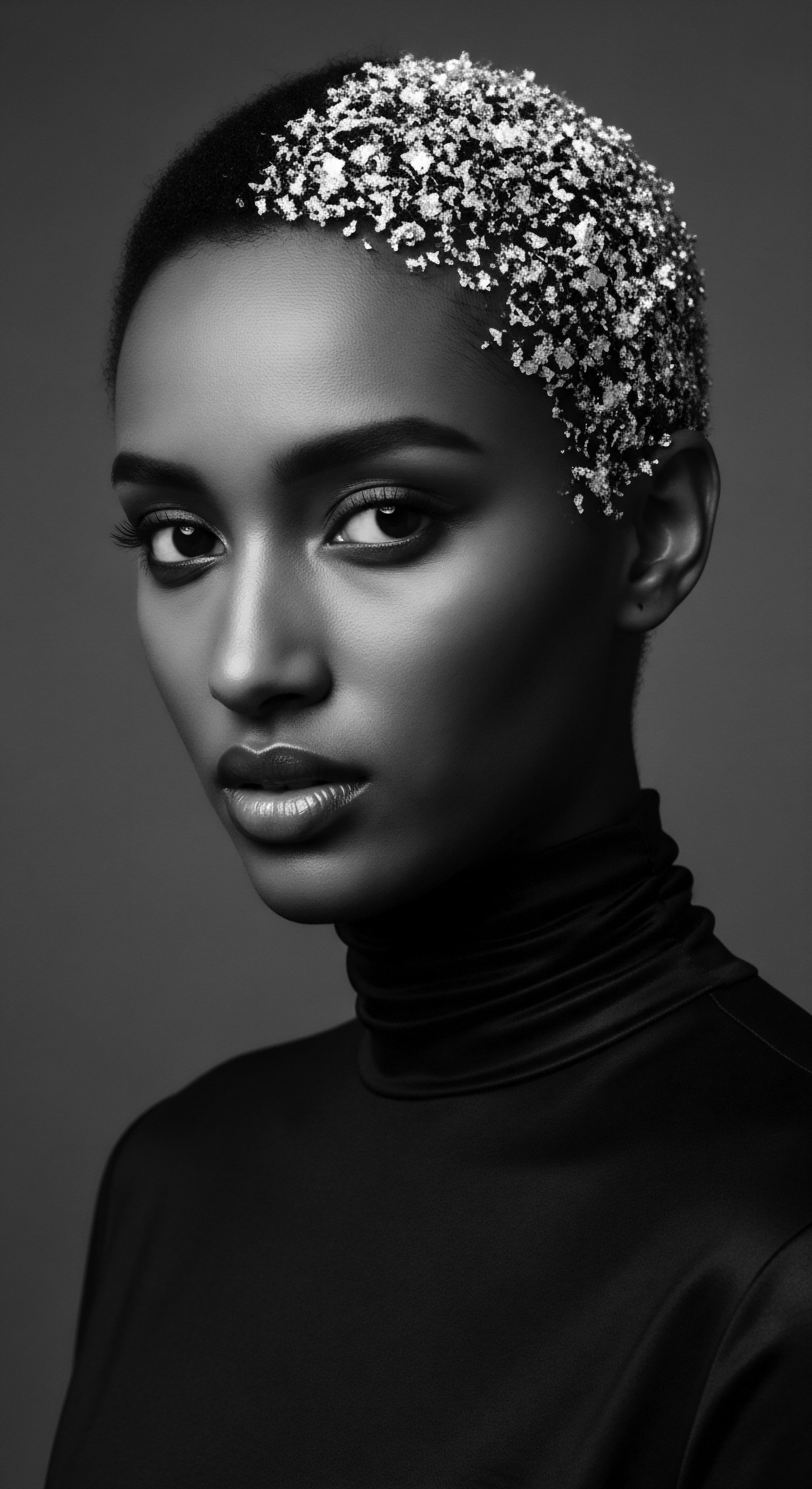
Reflection on the Heritage of Hair Abrasion
As we close this exploration into the multifaceted concept of hair abrasion, our journey truly comes full circle, returning to the very heart of textured hair heritage. The biological reality of cuticle wear, as we have observed, is inextricably woven into the historical tapestry of Black and mixed-race hair experiences. From the communal rituals of tender grooming that preserved vitality across generations, to the profound challenges posed by eras of forced conformity, hair abrasion stands as a silent witness to both struggle and enduring strength.
This shared wisdom, born from lived experience and ancestral knowledge, has always held the blueprint for nurturing hair’s delicate balance. It speaks of the subtle art of detangling with intention, the protective embrace of a well-tied head wrap, or the profound healing found in a natural balm. These are not mere cosmetic choices; they are acts of historical reclamation, quiet affirmations of self-worth, and a continuation of an unbroken lineage of care.
Understanding hair abrasion, in this deeper context, becomes a pathway to honoring not just the strands that grow from our scalp, but the ancestral hands that have guided their care for millennia. It is a reminder that in every gentle brush stroke, every carefully applied oil, and every choice to cherish our natural texture, we are participating in a profound, ongoing conversation with our heritage, nurturing not just hair, but the soul it carries.
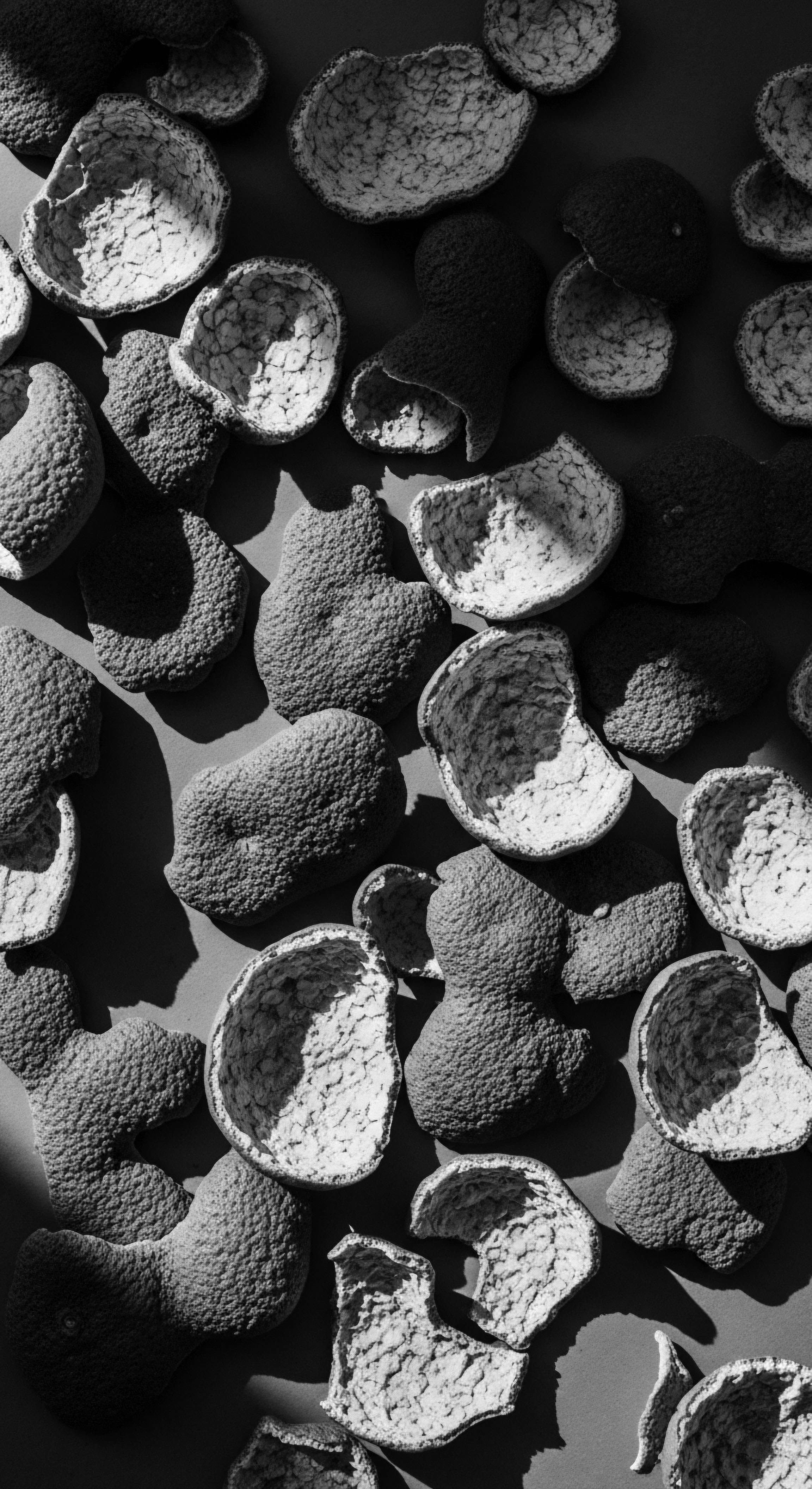
References
- Davis-Sivasothy, Audrey. 2011. The Science of Black Hair ❉ A Comprehensive Guide to Textured Hair Care. South Carolina ❉ Sivasothy, LLC.
- Franbourg, Aurélie, Frédéric Leroy, and Daniel P. de la Mettrie. 2003. “Current research on ethnic hair.” Journal of the American Academy of Dermatology 48 (6) ❉ S115-S119.
- Khumalo, Ncoza D. et al. 2012. “Hair breakage in African women ❉ a common and distressing problem.” Clinical and Experimental Dermatology 37 (2) ❉ 145-151.
- Robbins, Clarence R. 2012. Chemical and Physical Behavior of Human Hair. New York ❉ Springer.
- Tress, Susan. 2005. “Hair ❉ A Cultural History.” New York ❉ Random House.
